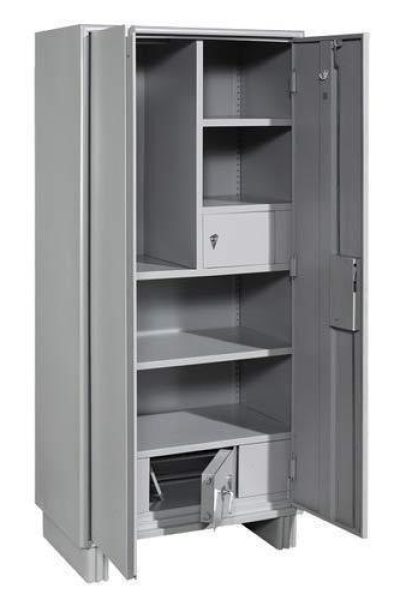Project Report For Almirah Manufacturing Plant
Introduction
Project report for Almirah Manufacturing Plant is as follows.
An almirah production factory is a large-scale facility where almirahs, also known as wardrobes or closets, are manufactured. Almirahs are crucial pieces of furniture used for storage and organisation in homes, businesses, and other contexts. The manufacturing plant is in charge of the complete production process, from raw materials to the finished product.
Typically, the plant begins with the acquisition of raw materials like as wood, metal, hinges, handles, and other essential components. These materials are carefully chosen for their quality and longevity, guaranteeing that the finished product satisfies the needed criteria. The factory may have designated suppliers or a distinct department for material procurement.
The manufacturing process begins once the raw ingredients are accessible. It generally consists of numerous processes such as cutting, shaping, assembling, and finishing. Saws, drills, CNC routers, and edge banding machines are prominent examples of automated machinery and equipment used to simplify production and maintain quality.
During the cutting step, the raw materials are divided into particular dimensions and shapes based on the design parameters. Computer-controlled machinery is frequently used for precise and efficient cutting.
Following cutting, the pieces are shaped and then processed to make the almirah’s numerous components, such as panels, doors, shelves, and drawers. Screws, dowels, or specialised joining mechanisms are used to assemble the components. This stage is carried out by skilled personnel or automated assembly lines, assuring appropriate alignment and structural integrity. Throughout the assembling process, quality checks are undertaken to discover any flaws or discrepancies.
The almirah is finished when it has been entirely built. This may include sanding, staining, painting, or adding protective coatings to improve the aesthetic and longevity of the object. Quality control checks are performed at this step to guarantee that the final almirahs satisfy the necessary criteria. The almirahs are wrapped and ready for transportation after passing the quality control inspections.
They are properly packaged and labelled to avoid damage during delivery. To oversee the distribution and delivery of manufactured almirahs to retailers or consumers, the factory may have a specialised logistics department or partner with third-party logistics suppliers.

Types Of Almirah Manufacturing Plant
Wood-Based Almirah Manufacturing Factory: This type of factory primarily manufactures almirahs made of wood or wood-based materials. They may specialise in classic or modern designs, and they frequently have a woodworking shop outfitted with saws, planers, and other woodworking tools.
Steel Almirah Manufacturing Plant: These facilities specialise in the production of steel or metal alloy almirahs. Metal fabrication facilities are often equipped with shearing machines, bending machines, and welding stations to form and assemble metal components.
Manufacturing Plant for Modular Almirahs: Modular almirahs are built with replaceable components or modules that may be joined to create customised storage solutions. This type of manufacturing facility specialises in the production of modular almirah systems and may feature a specialised assembly line for efficient module production.
Custom Almirah Manufacturing Plant: These facilities cater to the custom or high-end markets. They provide design, material, finish, and size customization to fulfil the specific needs of particular consumers or interior designers.Almirah Manufacturing Plant for Large manufacture: These facilities are designed for large-scale manufacture of standardised almirah designs. They prioritise efficiency and use automated assembly lines to satisfy high volume needs by minimising manual labour and maximising productivity.
Market Potential Of Almirah Manufacturing
In the projected timeframe of 2021 to 2025, worldwide demand for almirahs is predicted to expand. With a CAGR of 6.1 per cent from 2021 to 2025, the market is expected to grow to USD 79 million by 2025, up from USD 62 million in 2019.
The worldwide market is divided into two categories: manual and automated. Due to the lower operation and repairing costs of manual wardrobes compared to other types, the manual category is projected to have the biggest share of the market. Furthermore, because regional cabinet stores and merchants are easily accessible to the public, such a category generates more income.
The worldwide industry is divided into two types of applications: home and commercial. Due to the huge desire for almirah cabinets among the home population for their daily clothes storage needs, the domestic sector is projected to have a significant market share. Furthermore, the growing demand for bespoke wardrobes among some of the general public is fueling segment income growth.
Project Report Sample On Almirah Manufacturing Plant
Need Help?
Create 100% Bankable Project Report

